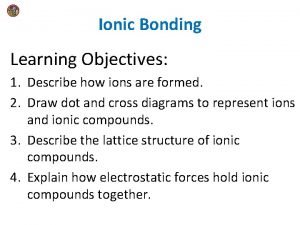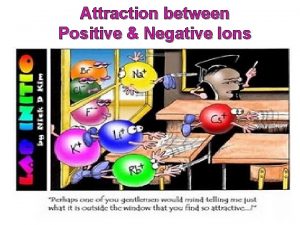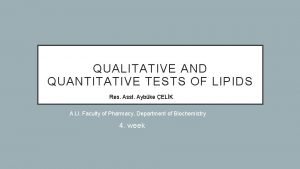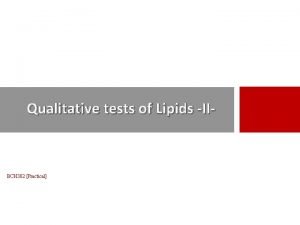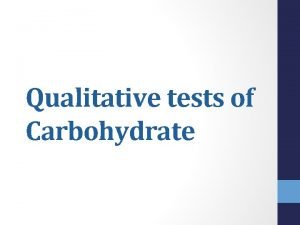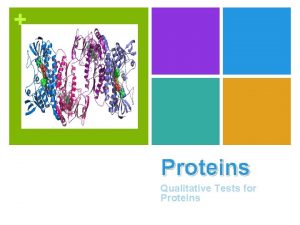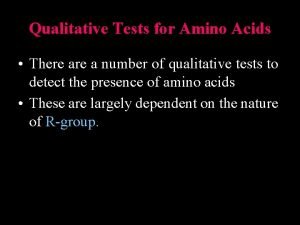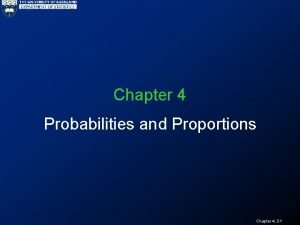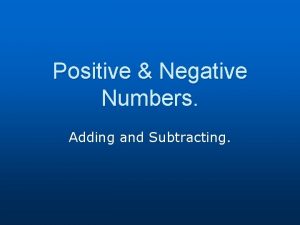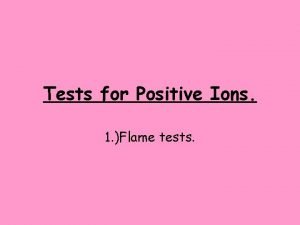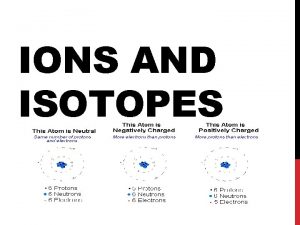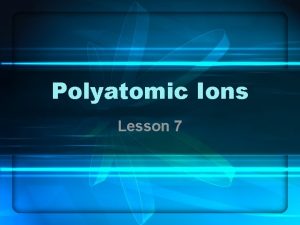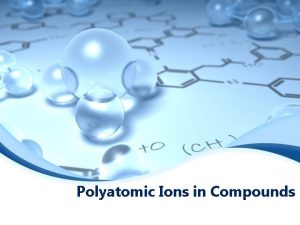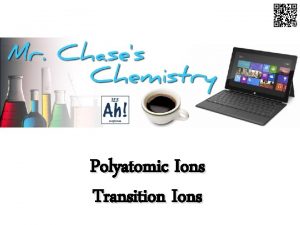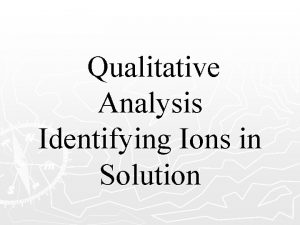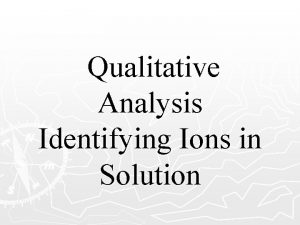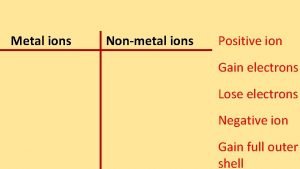Tests for Positive Ions 2 Qualitative tests Learning













- Slides: 13

Tests for Positive Ions. 2. ) Qualitative tests.

Learning Objectives. By the end of the session: • Everyone will have experience of carrying out qualitative tests for positive ions. • Most students will be able to identify Aluminium, Calcium, Copper (II), Iron (III) Ammonium and Magnesium ions. • A few students will be able to identify an unknown ion using qualitative tests.

Starter. • We have seen that flame tests allow us to identify some metal ions. • If I try to carry out a flame test on a compound containing Aluminium, Magnesium or Lead, what do you notice? What did we notice about the flame colours of Calcium and Lithium? • Some elements have flame colours which are very similar. This makes them difficult to identify. • Today, we will look at another technique to help us differentiate between compounds which give similar flame tests.

Safety. • Sodium hydroxide is corrosive. • Treat all known and unknown ions as if they were toxic. • Ammonia gas is harmful and should not be inhaled. • Care needed when heating Sodium hydroxide solution.

Qualitative tests.

Qualitative tests. Using the apparatus on the previous slide, this is the procedure for qualitative tests. 1. Place approximately 1 cm 3 of the substance under test, in a test tube. 2. Add 1 cm 3 of dilute Sodium Hydroxide solution. 3. Carefully observe. Note your observations. 4. Repeat steps 2 & 3 twice more.

Observations. Ion After 1 cm 3 of Na. OH. After excess Na. OH. Al 3+ Ca 2+ Cu 2+ Fe 3+ NH 4+ Mg 2+

Observations. Ion After 1 cm 3 of Na. OH. After excess Na. OH. Wispy, white precipitate. Precipitate dissolves to give colourless 3+ Al solution. No change. Ca 2+ White precipitate formed. No change. Cu 2+ Blue gelatinous precipitate formed, No change. Fe 2+ Mud-green may turn brown at surface. Rust-brown gelatinous precipitate formed. No change. 3+ Fe No precipitate, faint but pungent smell No change. + NH 4 may be present. No change. Mg 2+ White precipitate formed.

Observations. • • You should now have a complete set of observations for the test-tube reactions. Repeat the test for Ammonium ions, but this time, gently heat the test-tube over a Bunsen burner. Hold a piece of damp red litmus paper to the mouth of the testtube. What do you see? What does this mean? Why moisten the litmus paper?

Unknown substance. • Test the unknown substance with Sodium Hydroxide solution. Note your observations and compare with the results of your experiments. Can you identify the unknown? • X=

Unknown substance. • Test the unknown substance with Sodium Hydroxide solution. Note your observations and compare with the results of your experiments. Can you identify the unknown? • X=

Homework. Use the following observations to identify the unknown ions. Ion Flame test A B Add Na. OH Green, gelatinous precipitate. Red flame. White precipitate. C White precipitate, insoluble in excess Na. OH. D White precipitate, dissolves in excess Na. OH. Identity

Learning Objectives. By the end of the session: • Everyone will have experience of carrying out qualitative tests for positive ions. • Most students will be able to identify Aluminium, Calcium, Copper (II), Iron (III) Ammonium and Magnesium ions. • A few students will be able to identify an unknown ion using qualitative tests.
 What do the roman numerals in a cation's name indicate?
What do the roman numerals in a cation's name indicate? Positive ions are atoms that have
Positive ions are atoms that have Electron dot structure of magnesium fluoride
Electron dot structure of magnesium fluoride Iq intelligence
Iq intelligence Qualitative tests for lipids lab report
Qualitative tests for lipids lab report Copper acetate test principle
Copper acetate test principle Qualitative tests for carbohydrates
Qualitative tests for carbohydrates Example of denatured protein
Example of denatured protein Qualitative tests for amino acids
Qualitative tests for amino acids New zealands tests positive
New zealands tests positive Cuadro comparativo de e-learning b-learning y m-learning
Cuadro comparativo de e-learning b-learning y m-learning Novobiocin test
Novobiocin test Negative number rules
Negative number rules Positive practice positive outcomes
Positive practice positive outcomes

